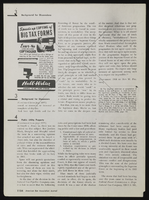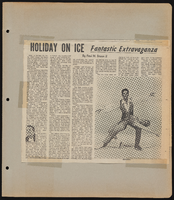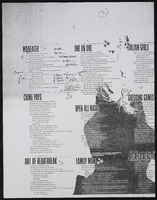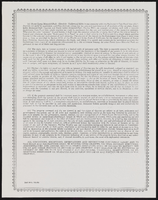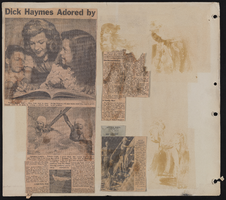Search the Special Collections and Archives Portal
Search Results
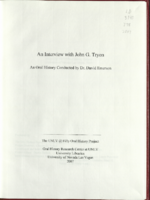
Transcript of interview with John G. Tryon by Dr. David Emerson, February 21, 2006
Date
2006-02-21
Archival Collection
Description
John G. Tryon was one of the early leading figures in the Engineering Department at UNLV. He grew up in Washington, D.C., the oldest of three sons. His father worked with the National Bituminous Coal Commission during the Depression and his mother was editor of the American Association of University Women's Publications. John went directly to University of Minnesota after high school graduation and earned a bachelor's in physics. During WWII he served in the Army Signal Corps and then went back to Cornell University to get his doctorate. His post doctoral work experience includes six years at Bell Telephone Laboratories, eleven years at University of Alaska, and six years at Tuskegee Institute. In 1974, Dr. Tryon interviewed at UNLV and was hired. The faculty carefully built up the curriculum, adding classes one at a time. John introduced a senior engineering design course modeled after one that pioneered at Dartmouth. He had also introduced this particular course at University of Alaska and Tuskegee. John was a member of the Academic Standards Committee at UNLV which helped set standards for academic probation and semester length. He has strong opinions on keeping engineering students who show promise and interest, and letting go of students whose academic strengths don't match the program. He believes students need to be matched to opportunity, be given the chance to find a niche that fits, and that they should not be given inflated grades or false hope. Dr. Tryon met his wife-to-be in Ithaca, New York, while attending Cornell University. His wife's mother, who was married to a botany professor, had invited him to Sunday dinner, something she had done for a number of students. John and his wife, who eventually became an English teacher, have two sons who grew to college age while they were in Alaska. Today they enjoy their church community, their family, and their circle of friends.
Text

Interview with Linda (Mack) Smith, October 6, 2006
Date
2006-10-06
Archival Collection
Description
Narrator affiliation: Deputy Manager Nevada Operations Office, U.S. Department of Energy; Nevada Test Site Historical Foundation
Text
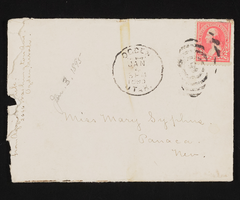
Letter and envelope from Aggie Herrick Ogden, Utah. to Mary Etta Syphus, Panaca, Nevada
Date
1895-01-03
Archival Collection
Description
From the Syphus-Bunker Papers (MS-00169). The folder contains an original handwritten letter, an envelope, a typed transcription of the same letter, and a copy of original letter attached.
Text
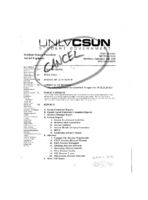
Meeting minutes for Consolidated Student Senate, University of Nevada, Las Vegas, September 26, 2005
Date
2005-09-26
Archival Collection
Description
Includes meeting agenda. CSUN Session 35 Meeting Minutes and Agendas.
Text
Pagination
Refine my results
Content Type
Creator or Contributor
Subject
Archival Collection
Digital Project
Resource Type
Year
Material Type
Place
Language
Records Classification


